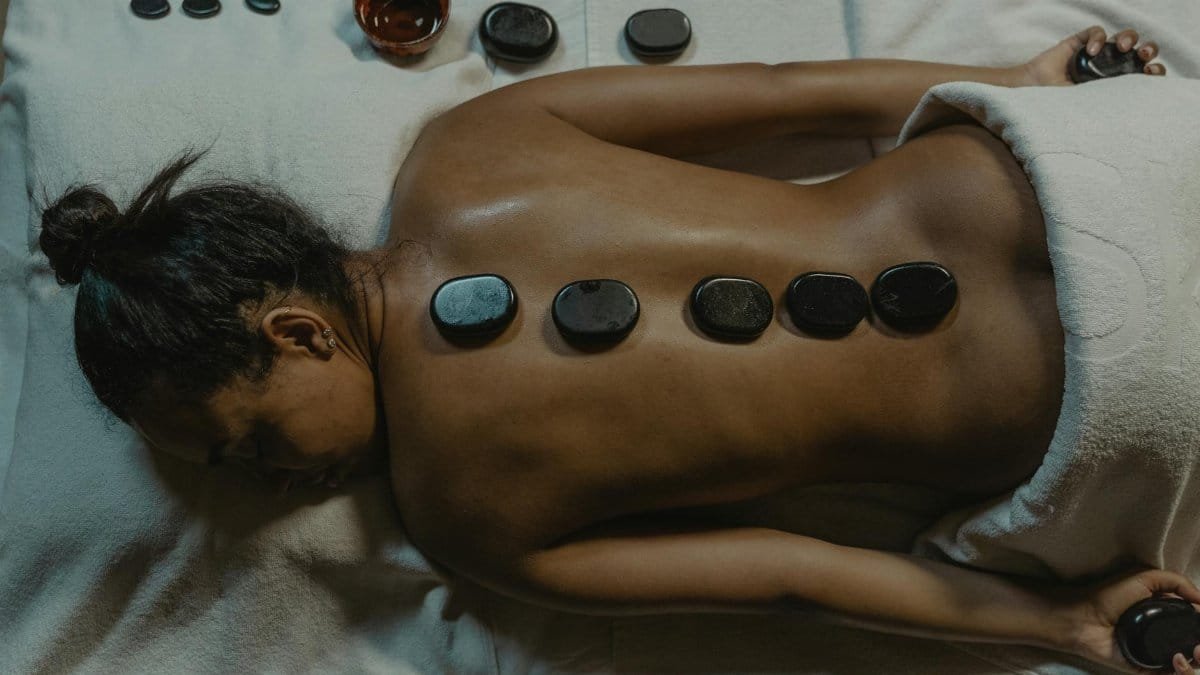Sometimes, the simplest data point can jolt us into paying attention. A 2023 survey from the National Center for Health Statistics revealed that nearly 18% of American adults now practice some form of meditation, up from just 4% two decades ago—a surge driven by our collective quest for calm amid relentless daily stressors. This isn’t just a fad; it’s a response to the mounting pressures of work, family, and an always-on digital world. Enter meditation hacks: clever, accessible tweaks that make the ancient practice more approachable for everyday people. These aren’t rigid rituals but practical shortcuts designed to fit into busy lives, helping middle-aged folks like many of us unwind without needing hours of silence or a mountaintop retreat. As we navigate 2025’s uncertainties, from economic shifts to personal health concerns, these strategies offer a grounded way to reclaim a bit of peace.
1. Start with Micro-Breaths

Imagine a harried parent, juggling remote work calls and school pickups, pausing for just 30 seconds to focus on their breath. It’s not the full lotus position, but a quick inhalation through the nose, held briefly, then exhaled slowly. This micro-breath hack taps into the body’s natural relaxation response, lowering heart rates almost instantly. Researchers at Harvard Medical School have long studied how such brief interventions can reduce cortisol levels, the hormone tied to stress. In one controlled trial, participants who practiced short breathing exercises reported feeling 25% more relaxed after just a week.
What’s compelling here isn’t the science alone—though it’s solid—but how it plays out in real life. Take the story of a mid-40s accountant from Chicago, who shared anonymously in an online discussion that these mini-breaks transformed her afternoons. “I’d feel my shoulders tense up around 3 p.m.,” she recalled, “but forcing myself to breathe deeply for a minute changed everything.” No elaborate setup required; just a willingness to pause. Yet, it’s not without its hurdles. Some find their minds wandering immediately, turning what should be a respite into another task. That’s where consistency comes in, building the habit like any other skill. Over time, these breaths accumulate, creating pockets of calm that ripple through the day.
For those skeptical about fitting this into a packed schedule, consider integrating it with existing routines. Pair it with waiting for the coffee to brew or during a commute stoplight. The key is accessibility, making meditation hacks less intimidating and more like a trusted tool in your back pocket. As trends in 2025 lean toward personalized wellness, this approach aligns perfectly, supported by findings from the Harvard Health Publishing, which details how breath control can quell stress responses effectively.
2. Progressive Muscle Relaxation for Nerve Soothing

Picture a quiet evening in a suburban living room, where someone methodically tenses and releases each muscle group, starting from the toes and working upward. This is progressive muscle relaxation, a meditation hack explicitly designed to soothe frayed nerves. Developed in the 1920s by physician Edmund Jacobson, it works by contrasting tension with release, signaling the nervous system to stand down. In today’s high-anxiety environment, it’s particularly relevant for those whose nerves feel perpetually on edge—perhaps from endless news cycles or family demands.
Diving deeper, the technique involves clenching fists for five seconds, then letting go, feeling the warmth of relaxation spread. Studies show it can lower anxiety scores by up to 30%, as evidenced in research from the National Institutes of Health. But let’s make this vivid: One middle-aged teacher from Texas described it as “unwinding a tightly coiled spring inside me.” She started after a particularly stressful school year, finding that 10 minutes before bed melted away the day’s jitters. Of course, it’s not always seamless; beginners might struggle with the initial tension phase, mistaking it for added stress. The trick? Go slow, perhaps guided by an app, and notice how the body responds differently each time.
This hack shines in its adaptability. For night owls battling insomnia, it becomes a pre-sleep ritual. Amid 2025’s ongoing mental health conversations, it’s a reminder that soothing nerves doesn’t require pharmaceuticals—sometimes, it’s about rediscovering control over one’s own physiology. Pair it with dim lighting or soft music for enhanced effect, turning a simple exercise into a personalized sanctuary.
3. Mindful Walking in Nature

What happens when you combine movement with awareness? Mindful walking emerges as a dynamic meditation hack, especially potent for relaxation in outdoor settings. Instead of powering through a hike with podcasts blaring, this involves tuning into the sensations: the crunch of leaves underfoot, the breeze against your skin. It’s a shift from distraction to presence, helping to quiet the mental chatter that plagues so many.
Evidence backs this up. A study published in the journal Frontiers in Psychology found that participants who engaged in mindful walking reported significantly reduced rumination, that endless loop of worry. Consider a scenario from a recent public account: A 50-year-old engineer, overwhelmed by project deadlines, took to his neighborhood park. “Focusing on each step made the world feel less chaotic,” he noted. Yet, urban dwellers might face distractions like traffic noise, turning the practice into a test of focus. That’s part of its beauty—adapting to imperfections builds resilience.
Vary the pace: Slow it down on tough days, or incorporate gratitude for the surroundings. As we see more emphasis on eco-wellness in 2025, this hack bridges personal calm with environmental connection, fostering a deeper sense of ease that’s hard to replicate indoors.
4. Guided Imagery Journeys

Guided imagery flips the script on traditional meditation by inviting vivid mental escapes. Close your eyes and envision a serene beach, waves lapping gently—suddenly, relaxation isn’t abstract but immersive. This hack leverages the brain’s visualization powers to dial down stress, often more engaging for those who find silent sitting monotonous.
It’s not mere daydreaming; clinical trials, like those from the Mayo Clinic, demonstrate its efficacy in reducing pain and anxiety. Envision a busy nurse in New York, stealing five minutes between shifts to mentally transport herself to a forest glade. “It resets my entire mood,” she shared in an anonymous online reflection. Challenges arise when intrusive thoughts crash the scene, but with practice, they fade. Start with short sessions, perhaps using free audio guides, and build from there.
The real intrigue lies in customization: Tailor the imagery to personal havens, whether mountains or childhood homes. In an era of virtual realities, this analog version offers authentic relief, proving meditation hacks can be as creative as they are calming.
5. Body Scan Awareness

Ever notice how tension hides in unexpected places, like a clenched jaw or tight shoulders? The body scan hack brings awareness to these spots, methodically sweeping from head to toe, acknowledging sensations without judgment. It’s a foundational meditation tool, promoting relaxation by fostering a dialogue between mind and body.
Research from the University of Wisconsin-Madison supports this, showing body scans can enhance emotional regulation. Picture a retiree in Florida, lying on his yoga mat, discovering layers of stress he didn’t know existed. “Releasing it felt like shedding weight,” he described. For some, the scan reveals discomfort that’s hard to sit with, prompting a gentle persistence. Integrate it into mornings or evenings for routine grounding.
As 2025 spotlights holistic health, this hack underscores prevention over cure, turning self-awareness into a powerful ally against burnout.
6. Mantra Repetition for Focus

Repetition can be rhythmic magic. Choose a simple phrase—like “peace flows through me”—and repeat it softly, letting it anchor wandering thoughts. This mantra hack cuts through mental noise, channeling energy toward relaxation.
Studies in the Journal of Evidence-Based Complementary & Alternative Medicine highlight its benefits for stress reduction. A working mom from Seattle found solace in it during commutes: “It turned traffic jams into tolerable pauses.” Skeptics might dismiss it as simplistic, but the repetition’s subtlety builds over time. Experiment with personal mantras for relevance.
In our distraction-filled world, this offers a portable calm, adaptable to any moment.
7. Loving-Kindness Meditation

Extend compassion outward, starting with yourself: “May I be well, may I be happy.” Loving-kindness meditation, or metta, fosters relaxation by nurturing empathy, dissolving isolation’s grip.
Findings from Stanford University reveal it boosts positive emotions. An office worker in Boston practiced it amid team conflicts: “It softened my edges, making everything feel lighter.” Initial awkwardness is common, but persistence pays off. Direct it toward loved ones, then strangers, expanding the warmth.
As social divides persist into 2025, this hack heals from within, proving kindness is a relaxation superpower.
